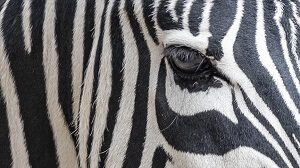
Can Cats Eat Lemon?
September 16, 2022
Frill-Necked Lizard Facts
September 18, 2022
Because of their unique appearance, zebras are animals that are impossible to overlook. Their striped pattern has turned them into the muse of fashion designers and into true targets for crowds visiting zoos.
But zebras are much more than “striped horses.” Here are some curiosities about zebras, the emblematic animals of Africa.
Origin
The Latin name is Equiferus, which means wild horse. The origin of the zebra is unknown. It is thought that it came from England, Italy, Portugal, etc.
Zebra is a species that belongs to the horse family and is distinguished by its distinctive white and black stripes. Stripes appear in each individual in unique patterns. Zebras are animals that live in herds.
Unlike horses and donkeys, zebras have never been able to be truly domesticated.
There are three species of zebras:
- The plain zebra;
- The Grévy Zebra, or the Imperial Zebra;
- The mountain zebra.
They can be found in a variety of habitats: plains, savannahs, forest areas, hills, and mountains.
It has evolved over the last 4 million years from old horses. It is assumed that the stripes appeared over time through evolution. The zebra is the most common species found in the plains in southern and eastern Africa.
What does a zebra eat?
Zebras’ food is made almost entirely of fodder, but they can also occasionally eat shrubs, plants, branches, leaves, or bark.
Their digestive system allows them to survive having a diet of lower nutritional quality than other herbivores.
Appearance
The common zebra has a shoulder height of 1.3m, a body length of 2 – 2.6m, and a tail of 50cm. It can weigh up to 350kg, with males being larger and heavier than females.
You might also like my articles on:
The Grévy zebra is larger than the common, plains zebra, and the mountain zebra is the smallest of the three species. At first, it was thought that zebras were white animals with black stripes, but then it turned out that the animal’s color is black and the stripes are white.
The stripes are vertical on the head, neck, and most of the body, and horizontal on the legs. Vertical stripes help the zebra camouflage in the grass. This helps it get rid of predators, its biggest predator being the lion.
Another hypothesis is that several grouped zebras confuse predators by making them believe that there is actually only one large animal. This also makes it difficult for its biggest predator, the lion, to choose a target.
Another opinion about the stripes is that their uniqueness helps individuals to distinguish between themselves. Personally, the last hypothesis with distinction is considered null, as horses have no stripes and can distinguish each other.
The zebra’s behavior
Zebras are animals slower than horses, but their resistance helps them get rid of predators. When zebras are followed, they run, like rabbits, in zigzags, which makes it difficult for predators to hunt them.
 When zebras are cornered, they hit the attackers with their hoofs or bite. They have excellent vision. Like most animals with hooves, their eyes are located on the sides of their heads and can cover a large field of vision. They can also see at night, but not as well as most predators, like felines, for example.
When zebras are cornered, they hit the attackers with their hoofs or bite. They have excellent vision. Like most animals with hooves, their eyes are located on the sides of their heads and can cover a large field of vision. They can also see at night, but not as well as most predators, like felines, for example.
They also excel in hearing, and their ears are larger and rounder than those of horses. Like horses, they can rotate their ears in almost all directions. Besides sight and hearing, zebras have an acute sense of smell and taste.
Like most horse families, zebras are very social. Their social structure depends on the species. Zebras live in herds composed of a stud, 6-7 females, and their foals. When the harem is attacked by hyenas or other animals, the females form a circle and stick the foals in the middle while the male tries to remove the danger. Like horses, zebras sleep on their feet and only near other zebras to be alerted if a predator comes.
It has been tried to domesticate zebras because they have a higher resistance to African diseases. This failed because of the animal’s unpredictable nature and a tendency to panic under stress.
Modern man has had and still has a great impact on the zebra population. Because of their popularity, these animals are hunted for their skin and meat.
The mountain zebra was near extinction in 1930 when it had a population of fewer than 100 individuals. This has improved slightly due to conservation efforts. The species is still endangered and protected in some national parks, while the quagga zebra is an extinct species.
Facts about zebras
- The zebra is part of the Equidae family, along with horses and donkeys.
- Just like the fingerprints on our fingers, the zebras’ stripes are unique in each specimen.
- They are social animals and fall asleep only if they are near other zebras, who can warn them if predators approach.
- They are also very brave and solidary, and if one of them is wounded by a predator, the others surround it trying to chase the predator away.
- The baby zebra called foal has a lot of protection and care from the mother who feeds it with mother milk for a year.
- Ostriches and zebras often live together to protect each other from predators. The ostrich can see much better than a zebra, while the zebra can hear or smell danger better than an ostrich.
- Zebras communicate with each other through both sounds and the position of the ears and tail, for example: When they hold the ears to the back they are nervous and agitated, and when they hold them straight up, it means they are relaxed and friendly.
- It is also a fast animal, able to reach a speed of 65 km/h when running.
- When chased by predators, they zigzag to disorient them.
- Like horses, zebras sleep on their feet.
- The largest zebra is of the grevy’s species and weighs around 350 to 450 kg.
- The gestation period lasts between 12 and 14 weeks.
- Zebras reach maturity at 3-4 years, and their lifespan is about 25 years in the wild. In captivity, they can reach the age of 40 years.
- Since the 19th century, several crossbreeding with zebras, called “zebroids”, have been made. Zebroids were done by mating zebras with horses or donkeys.
- The Grevy zebras, in the past, had been called “hippotigers”, being trained to pull two-wheeled carriages for circus performances.
- They are found in African folk tales where it is told how their stripes appeared.
- They appear on the emblem of the Botswana coin.
- Zebras are also present in movies and cartoons, and all children love the zebra from the movie Madagascar, right?
